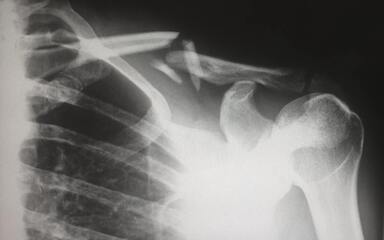
In my practice I like to think of ANY imaging that I am requesting as a way to CONFIRM my diagnosis OR it is ordered pre-operatively by the surgeons that I work with in order for them to better determine surgical management moving forward. It is certainly never used by the team I work with as a sole means to determine a diagnosis or treatment approach. In fact, we often suspect a pathology, and choose not to proceed with imaging because the imaging would not change the treatment approach and is therefore irrelevant regardless of the findings.
For many patients they do not understand the nuances of MRI machines or MRI protocols, X-ray protocols or the differences between CTscan and MRI for example. They feel justified in asking for imaging because they want to ensure that nothing is missed and that they receive the proper diagnosis. FAIR, but imaging for the sake of imaging is not the right approach and could even be detrimental in the treatment and management of your injury.
My caseload is predominately made of young adult hip/sport hip pathologies. I meet most of my patients in a surgeons office who specializes in young adult hip pathologies or through his referral. MOST OF MY PATIENTS ARE NOT SURGICAL.
The unfortunate reality is that a large portion of my clients have been seeking a diagnosis and appropriate treatment for a significant amount of time before they have met our team. Many of these clients have already received X-rays and MRI’s before they have met us, even more unfortunate is that often these xray's and MRI’s are somewhat useless to us because they are NOT the right protocol for the pathology, meaning sometimes they DON’T EVEN SHOW WHAT IS GOING ON. Furthermore, if the person interpreting the images is not familiar with the pathology or aware of the clinical presentation, a diagnosis is ENTIRELY MISSED.
Xray and MRI imaging show the history of your life in a few snap shots. It may show the current soft tissue findings or bone injuries and abnormalities that are causing your current pain, but it also shows old “scars” that you have sustained over your life time. These images should always be interpreted WITH your subjective and objective exams in mind. Meaning the person interpreting your imaging should be aware of your pain presentation and your clinical exam. Failure to interpret this information together may lead to unnecessary interventions or general mismanagement for your presentation.
For example, someone with generalized hip OA will show “wear” on the hip joint differently than someone who has femoral acetabular hip impingement. Someone who has hip impingement from a giant cam lesion will have a labral tear in a different position than someone who has hip impingement from retroversion. Retroversion cannot be diagnosed via Xray and we require a special MRI protocol or CT scan to confirm its diagnosis but we don’t need an MRI or CT scan to pick up the retroversion if we already suspect that from your clinical exam. We may choose to order the MRI or CT to confirm the retroversion or investigate as to the amount of retroversion and whether or not you are a surgical candidate, but clinically it won't change your management strategy much.
Furthermore, we may suspect that you have sustained a labral tear in your hip. In order to confirm this we could order an MRI arthrogram (a painful procedure where dye is injected into the hip and you are run through the MRI machine) but if we suspect that you have the tear, and it won't change the conservative management approach offered - why bother?
Imaging does not give the entire picture, and there is significant information that can be gained from a great objective clinical exam. In addition, imaging that shows “something is wrong” generally freaks people out, causing fear and anxiety and these factors perpetuate the pain cycle.
Moving forward I encourage clinicians and patients to really ask themselves, is this imaging needed? Am I the best person to be ordering this and interpreting this, and how will the information change my treatment or management?
What can you do as a patient to help the problem? Ask questions!
- When discussing imaging with your physician ASK WHY the images are being ordered. What
do they expect to find and how will the information be used to further improve your
pain presentation.
- Ask if the results will change the management plan
- Clarify why those specific images are being requested
- Clarify who will be interpreting the images.
If you are being referred on to another practitioner or specialist are they going to need different images, if so, do you need both?
We have a great team of diverse practitioners with all kinds of clinical experience at Donald Physiotherapy. If you have questions, or need some help navigating the muddy waters of imaging reach out to us! We are here to help!
~ Lindsay Tysdal, PT

 RSS Feed
RSS Feed